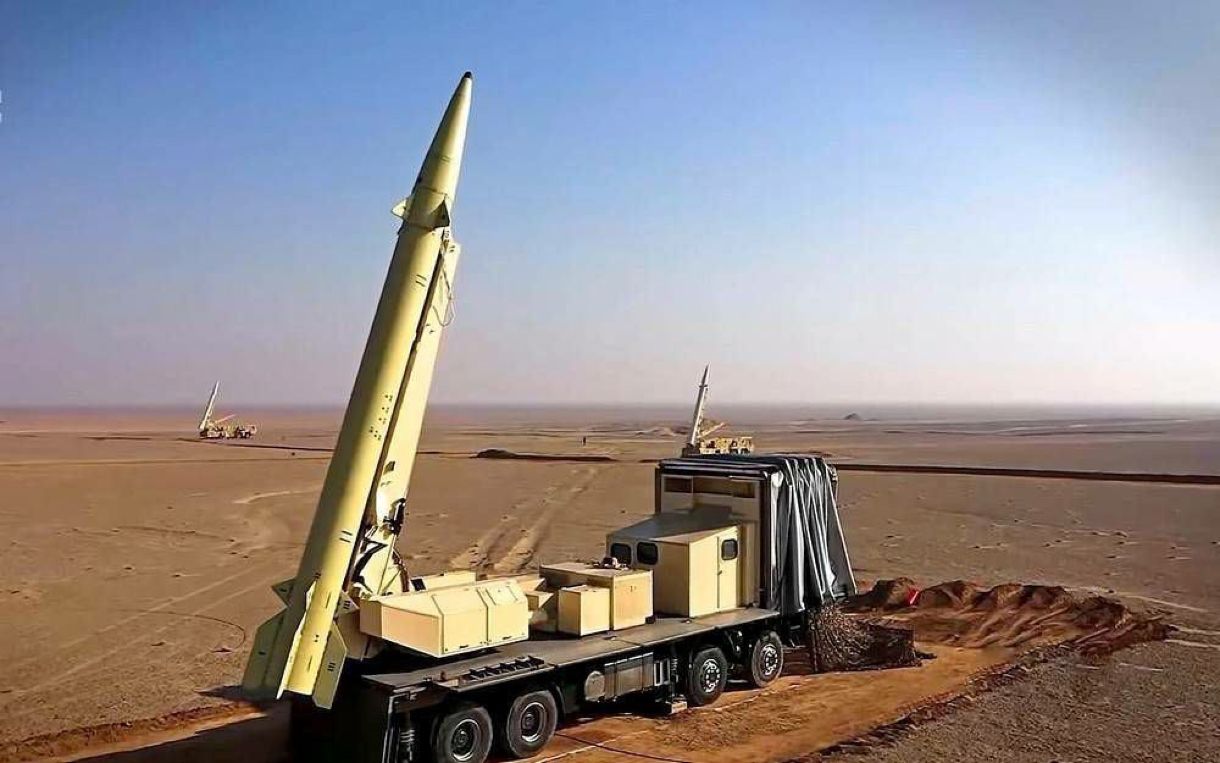As the war rages ferociously in the east of Ukraine, the country has put all its weight behind trying to acquire long-range missiles and fighter jets from the West. In contrast, preparing for a fresh missile strike on Ukrainian cities, Russia remains involved in talks with Iran to acquire ballistic missiles.
On January 30, the Ukrainian Air Force spokesman Yurii Ihnat claimed on national television that Russia was trying to procure Iranian ballistic missiles. He said that the Ukrainian air defense is powerless in its present form against those weapons, Iran’s Mehr News Agency reported.
“Russia is still willing to receive UAVs (unmanned aerial vehicles) and Fateh and Zolfaghar missiles from Iran. Those are ballistic missiles. We do not have the means to defeat them,” Yurii Ihnat said on Ukraine’s national joint 24/7 newscast.
Ihnat categorically expressed the ineffectiveness of the Ukrainian air defense troops to thwart enemy ballistic and anti-aircraft missiles traveling in a ballistic trajectory.
“The main threat that hangs in the air and can still be implemented is, of course, Iranian-made missiles. Russia has not abandoned its intentions to receive kamikaze drones from Iran and, in a certain way, the missiles announced earlier: Fateh and Zolfaghar models”, Inhat said.

The spokesperson further clamored, “This is ballistics; we have no means against ballistics today. We understand that Russia also has ballistics in the form of the same Kinzhal missiles. This is an air-based system that hits on a ballistic trajectory. Similarly, Kh-22 missiles… and S-300, and S-400 missiles are anti-aircraft missiles that hit on a ballistic trajectory.
“These are the challenges and threats we face today. It is possible to destroy them [the systems – ed.] in positions as well, but our partners also understand that means against ballistic threats are needed. Such as Patriot PAC-3 and SAMP-T.”
In October 2022, a report published in Reuters claimed that Russia and Iran were negotiating a deal for Iranian ballistic missiles after the super success of Shahed-136 in the war zone. By mid-October, Russia had significantly upped the ante, raining down missiles and unleashing suicide drones on Ukrainian cities.
“The Russians had asked for more drones, and those Iranian ballistic missiles with improved accuracy, particularly the Fateh and Zolfaghar missiles family,” one of the Iranian diplomats told Reuters.
By November, Iran was ready to deploy roughly 1,000 more weapons, including surface-to-surface short-range ballistic missiles and additional attack drones, to Russia for use in its conflict against Ukraine. However, even though Russia received a new batch of Shahed UAVs a few weeks later, the ballistic missiles remained elusive.
In early December, media reports suggested that no Iranian ballistic missiles would be coming to Russia. These reports indicated that Iran could not dispatch a ballistic missile shipment due to diplomatic pressure and internal political turmoil.
Sooner Or Later, Iranian Missiles May Be Coming!
Iran intends to restrict the payload and range of any SRBMs it provides Russia, according to a report published by Axios last month. The United Nations Security Council Resolution 2231 prohibits Iran from exporting drones or SRBMs with ranges greater than 300 kilometers and payloads greater than 500 kilograms until October 2023.
Tehran reportedly intends to abide by this resolution. The West Asian country is allegedly trying to modify the missiles to bypass the UN resolution. In return, Iran is slated to receive the advanced Su-35 fighter jets from Russia.
According to some reports, the Fateh-110 SRBM, which can reach targets up to 300 kilometers, will be modified by Tehran to ensure that it doesn’t violate UN rules. Additionally, Tehran has decided against dispatching the 700-kilometer-range Zolfaghar SRBM to Russia. EurAsian Times could not independently verify these reports.

However, even with a sizeable quantity of Fateh-110 missiles in its inventory, Russia would likely be able to expand or maintain its systematic devastation of Ukraine’s infrastructure and energy grids.
The speed of a ballistic missile is substantially higher (typically measured in km/s as opposed to km/h). This makes it far more difficult for Ukrainian forces to defend against these systems and the deadly warheads they carry.
The unit cost of Iranian missiles is much cheaper than the Russian missiles deployed in ongoing combat. Experts have warned that Iranian missiles threaten to alter the battlefield calculus for Ukraine owing to their speed and large combat payloads.
The United States, Germany, and even the Netherlands have announced that they would be arming Ukraine with the PAC-3 Patriot Missile Defense system, which can shoot down ballistic missiles. However, little is known when the systems will finally arrive in Kyiv.
However, the Ukrainian troops have either already started training on the Patriot missile defense or may be geared to begin shortly. With the PAC-3 and other air defense systems finally making their way into the battlefield in Ukraine, the country would be better prepared for Iranian ballistic missiles.
- Contact the author at sakshi.tiwari9555 (at) gmail.com
- Follow EurAsian Times on Google News




